Born in Dallas Texas, artist Gray Wielebinski uses their practice to explore the ways in which gender and sexuality intersect with other structures of power and identity, often referencing their body and journey as an individual who is currently undergoing the transition from female to male.
Working between London and Los Angeles in print, video, performance, sound, sculpture, and installation, Gray moved to London in 2017 to complete a masters in Fine Art Media at The Slade. Since then, Gray has exhibited internationally and is currently an artist in residence at The City & Guilds of London, alongside Taku Obata and Alistair Gordon.
Using a variety of strategies to explore identity, specifically their ambivalent relationships to masculinity, Gray’s more recent research and practice uses sports for both aesthetics and metaphor as an entry point to examine themes such as national identity (specifically the US and Americana), desire, myth making, surveillance, hierarchies, race, and gender. In Dark Air, the artist’s first solo exhibition at SEAGER gallery curated by Martin Mayorga and Vanessa Murrell from DATEAGLE ART, we observe Gray’s ongoing exploration of sporting ceremonies as seen in the artist’s personalised football scarf stand. Located at the entrance of the gallery space, the piece highlights the ritualistic yet commercial nature of the sport, while also reiterating the entwined nature and relationship found between myth and sport.
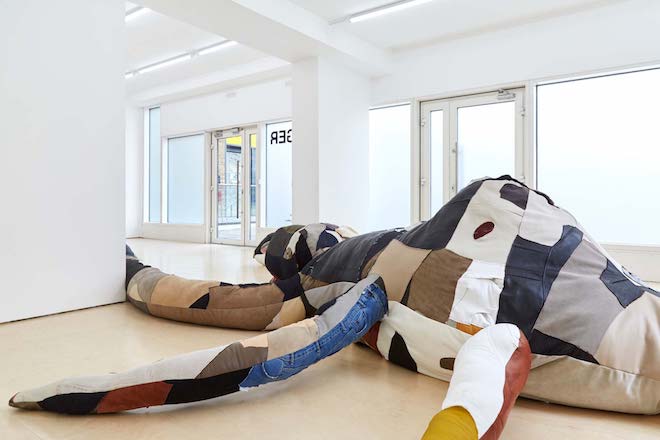
Instead of displaying a body of work, the exhibition uses the body as the work – acknowledging it as something which can be moulded and adjusted continuously. Using a diverse array of textiles to create a patchwork of materials that include recycled leather and jeans, Gray creates a site-specific sculpture, a monstrous creature that is representative of both the sphinx and Scorpion. Stuffed and stitched, the physical act of creating the hybradised beast presents the audience with a work that exists in a paradoxical realm. All at once it is violent and volatile yet gentle and vulnerable – playing with traditional binary stereotypes of male and female. With only a few days left to see Dark Air, Gray spoke with Twin about the show and their grotesque Frankenstinian beast. Gray also speaks openly about their own dysphoria and dissociation with their body as well as the importance of being conscious in order to re-inhabit and bridge the gap between their mind and body to create as harmonious a relationship as possible.
You started to create art as a way of helping you relate to your own body – is this where the tactile element of your practice and its link to your own body manifests from?
In a lot of ways, in regards to my gender identity as well as my art practice itself, I was existing very much in my own head and in an ideological way rather than a physical one, which isn’t necessarily a bad thing but I think became a problem for me as I was coming to terms very starkly with my own dysphoria and dissociation with my own body. This show in particular deals with a rejection of “before” and “after” narratives in a broader sense around myth making and storytelling, but that are so tied to mainstream/cis narratives around transness that can really seep into my consciousness, but is ultimately a dangerous way of thinking when it comes to my own understanding of myself and my life. I don’t particularly identify with the concept of “being in the wrong body” so while my dysphoria is real and distressing in its own way, there’s also a recognition of and gratefulness for the body I have and what its capable of and finding ways to inhabit it more consciously as I discover the ways, big and small, I might have subconsciously unlearned out of self-preservation. The “before” and “after” narrative tells us we aren’t complete yet or we can’t be happy or know ourselves until an outward marker of change or identity has been breached for others, but that obfuscates the work and learning and daily experiences we encounter on the road towards knowing oneself. Everyone in their own way has these experiences with learning or unlearning themselves, recognizing and accepting their bodies and their possibilities or limitations, and making their own meanings and interpretations on their own terms. With this in mind, I moved towards a more physical or tactile practice which has been a way of trying to reinhabit my body in a more conscious and present way on a daily basis (sewing in particular is quite a meditative act). Without sounding too much like Frankenstein, there is a power and a catharsis for me in creating these new ways of embodiment that take up physical space and I can hold in my hands or that literally dwarf me in a room, and I can also use this physical practice as a means of furthering my ideological pursuits and explorations of my identity and the world around me, and in so doing I hope to get closer to bridging my mind and my body in ways that are within my control.
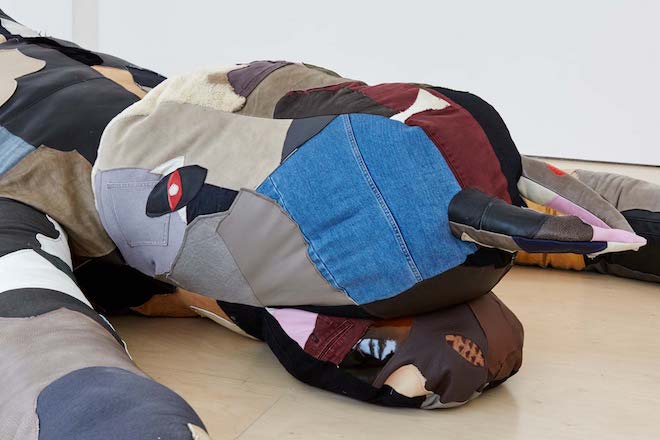
You are influenced by science fiction and the way it allows us to create other worlds and possibilities Can you name some of your influences?
Whether it was books or films or TV, I consumed a lot of media and stories as a kid and still continue to do so, so the list of inspirations is long and muddled together in some ways, but science fiction has always held a special place. Science fiction has long been a means, particularly for marginalized people, to hold up a mirror to see and critique that which is made to feel “natural,” which can then be a very useful tool for survival, communication, community and ultimately questioning and fighting the powers that be by understanding where they came from and how dominant narratives are upheld.
In Kindred, Octavia Butler interrogates the impacts of slavery and white supremacy through a time travel narrative. The Matrix has widely been revisited through the lens of the trans experience and transitioning, particularly as the directors, Lana and Lily Wachowski, came out as trans in recent years. The Twilight Zone is masterful at weaving both the minor and major elements of creating uncanny atmospheres that can go from nudging you slightly off kilter to knock you out for the count. For ‘Dark Air’ specifically I was also thinking about Stanislaw Lem’s Solaris which subverts a more typical trope of space exploration as a colonization narrative, and in fact is ultimately about the astronauts’ inability to cope, physically and emotionally, with an overpowering ocean planet. It’s about our complete inability to understand or fathom the extraterrestrial (and maybe even our own subconscious). Science fiction, at its best, lets us imagine and wonder and be awestruck with possibilities, while still keeping a foot firmly on the ground and, in fact, may help us see reality even clearer.
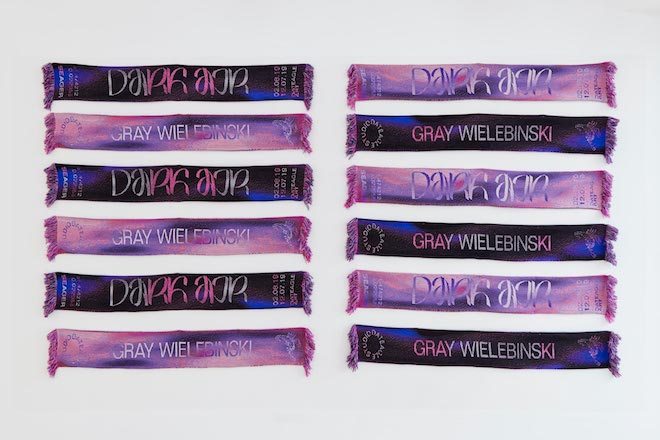
With Dark air you hope to overthrow the notion of the “hero’s journey” and our perceived set paths, goals, and obstacles – is this a comment on the overwhelming conditioning that has been determined through society and the West’s patriarchal system?
I’m fascinated by the idea of the hero’s journey as a storytelling archetype, and I think more so than completely subverting or throwing it out the window, it’s about an even deeper dive into it and not shying away from the minutiae and the mundanity that arguably differentiates a story from a life. The conditioning you’re referencing I think is important especially in relation to our contemporary moment within capitalism and this tension between expectations and conditioning to want certain things for our lives, to take certain paths or understanding success in specific ways, while at the same time being led to believe it’s our decision and that our happiness or opportunities lie squarely within ourselves or within our grasp rather than questioning what is out of our control and what might be possible to question or tweak within ourselves to find our own ideas or barometers of success. Some people are just trying to survive while at the same time we’re being told what we need to be happy or what we are doing wrong or what we need to overcome, and then the goal post keeps moving. It’s a function of capitalism to obfuscate our “true” foes or obstacles and for our path to be fog-covered, so perhaps even subconsciously I proposed of a sphinx that fits in with this atmosphere, or at least how I often feel while trying to navigate it. This all sounds a bit pessimistic but in actuality I hope for it to be empowering in any small way it can, that even in a time where things are made to feel and may very well be out of our immediate hands, there may be ways to internally recalibrate our parameters for success and happiness and fulfilment even on a day to day basis, even if it’s just how we relate to ourselves and each other.
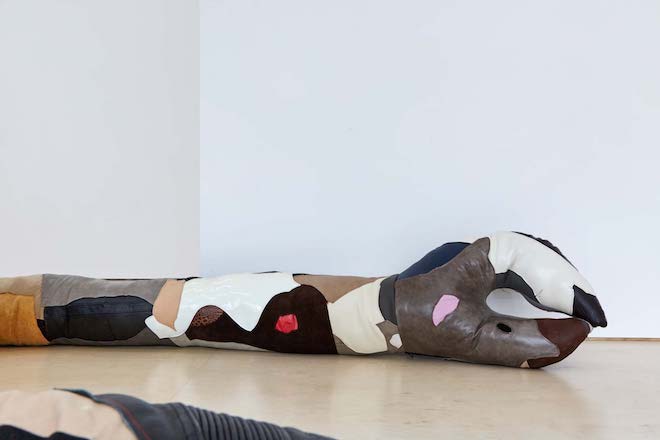
Can you explain the link between your exploration into Mythology and sports and how you connect the two?
I’m interested in blending ancient storytelling and mythological creatures or narratives with contemporary interpretations and iconographies, and in so doing am hoping to bring into question the biases and power dynamics/hierarchies that are often involved in storytelling and myth making both in the past and the present, and how that has the potential to shape our futures.
I also was thinking of intersections of sports, mythology/religion and even being an artist-the relationships between the grand events and the mundanity of the everyday that both, in their own ways, make up these experiences and our relationships to them. Holidays, championship games, art exhibitions certainly hold their own meanings, they can build community and give us something to look forward to and remember, but these go hand in hand with the everyday and the myriad other emotions and experiences built up around these that make up our meaning as well. Personally I am also thinking about gender and transitioning and the relationship between insular and exterior identities and how to shift narratives from a “before” and “after” to a whole other way of being and experiencing and becoming oneself on a daily basis. Rather than being a sort of trick or gimmicky reveal, my use of this iconography and the set-up of the exhibition itself is coming from a place of optimism and empowerment, of wanting to give both myself and the audience the choice to create meaning for ourselves and to question how and when we might be told otherwise.
What else will you be working on this year?
Right now, I’m working towards making new works for a group show at Lychee One in London and a three person show in Odense, Denmark both in September. I am also working on a newly commissioned video and performance piece in collaboration with HRH that I’m really looking forward to. After that I’m going to take some time to reflect on what I’ve made this year and how I want to move forward.
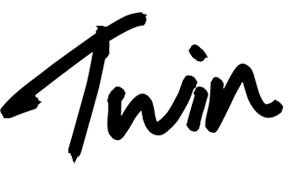
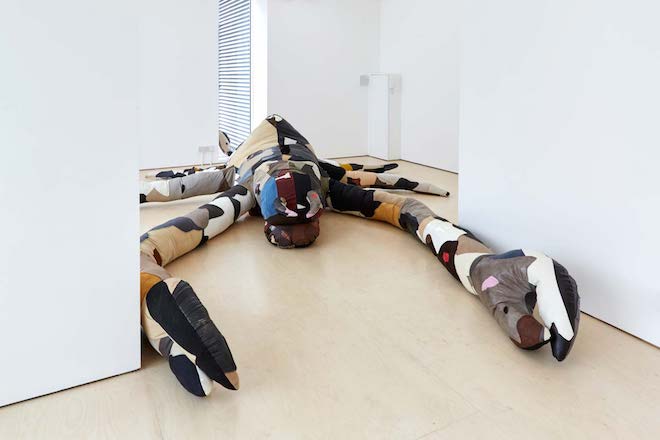

 Twitter
Twitter
 Tumblr
Tumblr
 YouTube
YouTube
 Facebook
Facebook
 Instagram
Instagram
